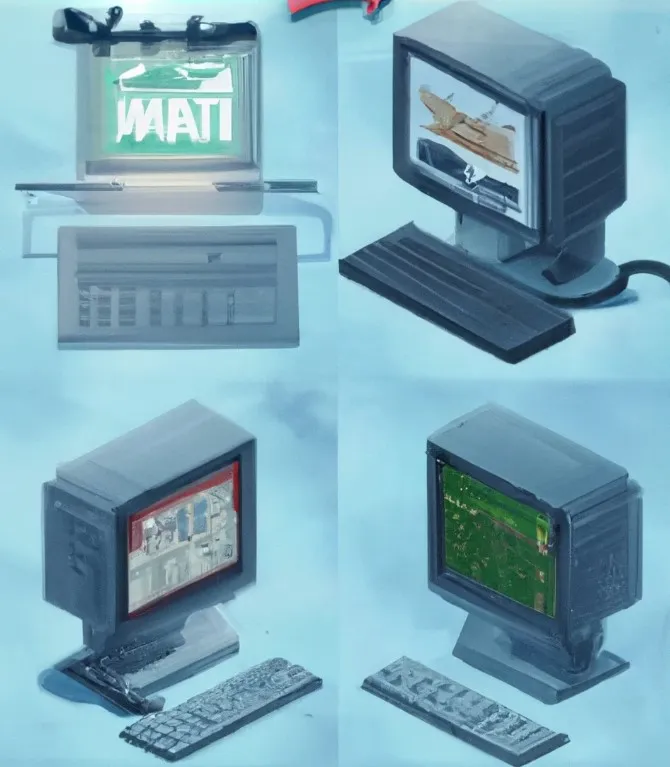In today’s world, translation is becoming increasingly important. A large proportion of companies and governments now publish and communicate their content in different languages.
A market currently estimated to be worth $39.37 trillion. The market is expected to grow at a compound annual growth rate of 2.07% from 2021 to 2028, so the translation services market is expected to be worth $46.22 in 2028.
Almost every industry is now highly influenced by technology, and translation is no exception. Technology has one unique characteristic: It is highly unpredictable. It becomes almost impossible to know how technology will evolve and therefore shape industries related to it. However, if there is only one way to predict the future is to analyze current technologic trends and how they are applied to the Translation industry.
Top 3 Translation Industry Trends for 2023
What will the Future of the Translation Industry be in the coming years? As always, this is a very wide and complex topic. However, through this article which discusses the Top 3 technology trends in the translation industry for 2023 you might have a clearer view on how the future may be shaped:
1. Evaluation of the 4 Machine Translation Paradigms
Machine translation, an automatic process that uses artificial intelligence to automatically translate a text from one language to another selected language. This process is completely digital and automated without human intervention. Machine translation analyses all text elements of the requested input text and recognises how words influence each other to translate a text
Currently there are 4 different paradigms of machine translation, lets take a look at them and other resource:

1.1 Rule-based Machine Translation (RBMT)
This is the most “Classical Approach” of all Machine Translation types. It Translates texts based on grammatical rules, dictionaries covering all the main semantic, morphological, and syntactic characteristics of each language respectively.
There are three different types of rule-based machine translation systems:
1.1.1 Dictionary Based Machine Translation
Gets a text input and transforms it into an output following basic rules stablished in a simple dictionary.
1.1.2. Transfer Based Machine Translation
Breaks translation into three steps:
- Analysis of input text to determine its grammatical structure
- Transfer of the resulting structure to a suitable structure in the target language
- Generation of the resulting translated text
1.1.3. Interlingual Machine Translation
In this approach, the source language in which the text is to be translated is transformed into an interlingua: An abstract language-independent representation. The target language is then generated from the interlingua.
1.1.4. Interlingual Machine Translation
In this approach, the source language in which the text is to be translated is transformed into an interlingua: An abstract language-independent representation. The target language is then generated from the interlingua.
2. Statistical Machine Translation (SMT)
Statistical Machine Translation focuses on the generation of statistical models built from the analysis of large volumes of bilingual (source and target languages) or monolingual data (target language). This data is called (bilingual or monolingual) text corpora, and it is built by analyzing existing human translations. The generation of text corpora also stablish certain statistical weights, which are later used to decide the most likely translation.
After models are created, a stadistical distribution is used to find the most probable translation for a given input. Rules-Based Machine Translation approaches are word-based. However, most modern SMT systems are phrase-based. Phrase-based translation focuses on reducing restrictions imposed by word-based translation by translating whole sequences of words, where the lengths may differ. Generated sequences of words are called phrases, which are not necessarily linguistic phrases, but phrases extracted using statistical methods throught the bilingual text corpora.
3. Hybrid Machine Translation
Hybrid machine translation is an approach that combines multiple machine translation techniques within a single system. This method was developed because no single technique can achieve optimal accuracy on its own. Hybrid machine translation systems are effective in enhancing translation accuracy, and are widely used in popular machine translation systems. There are multiple types of hybrid machine translation such as Multi-Engine, Statistical Rule Generation and Multi-pass or Confidence-Based.
We will not go in detail explaining the forms of Hybrid Machine Translation and it is a very complex topic, but feel free to check the following article on the Types of Hybrid Machine Translation for in-depth information
4. Neural Machine Translation
Uses artificial intelligence to learn languages and translate texts.
One machine translation is better suited to a particular task than another. Translations of texts dealing with topics in the fields of medicine, finance, law and science require a certain level of expertise in the respective field that cannot currently be provided by translation machines.
The machine translation market is currently estimated to be worth a total of $800 million. With an expected average annual growth rate of 30%, the machine translation market would reach a value of $7.5 trillion by 2030.
Machine translation is developing very fast and is getting smarter and better at translating our texts. Given the projected numbers and market growth, machines will continue to evolve in the coming years to properly translate complex texts.

2. Multilingual SEO strategy
Multilingual SEO, a strategy to optimise the content of a website for multiple languages. A multilingual SEO strategy creates a broader digital marketing strategy that targets multiple languages and therefore a wider audience. A strategy that focuses on optimising country-specific content.
More and more companies are expanding their international online presence. A multilingual SEO strategy is considered highly scalable, but certainly cost-effective. And besides expanding the reach of your website, customer satisfaction will also increase.
The way the internet is used differs from country to country. Therefore, it is important to keep the following 3 points in mind when implementing a multilingual SEO strategy:
– Do not duplicate content on the page
– Use only one language per page
– Optimise the metadata for the corresponding language
New innovations and techniques make it possible to pursue a multilingual SEO strategy. Look at what it can bring to businesses and what users (customers) experience. In the future, it will become more common for companies to pursue a digital marketing strategy that focuses on multiple languages rather than one.
3. Video Remote Interpreting technology or VRI
Video remote interpreting is a technology that allows sign language interpreters to communicate with deaf or hard of hearing people in the same place. So, there is no need for an interpreter to be on site to translate the message. VRI technology bridges the gap between telephone interpreting services and on-site interpreting services.
This is because this new technology makes it possible to communicate with the person in question when needed, eliminating the need for an on-site interpreter when necessary.
Video remote interpreting technology has many advantages, the most important of which are:
– More fluid conversations for all parties involved
– Contextual and non-verbal signals can be integrated
– Cost-effective It saves a lot of costs and is therefore
– Can be used upon request or on-demand
It is a technology that is just starting out, as it has mainly been tested during the COVID-19 pandemic. It has many advantages, also with regard to activities in our daily lives. For example, it is increasingly common for activities such as school or work to take place remotely, so there is a bright future for VRI. Translation technology has only just begun, but it is certainly not at its end.
Conclusion
The importance of translations is increasing day by day, in every sector. Translations ultimately ensure that the message can be delivered to the right person. These 3 trends will intensify in 2023 and ultimately ensure that people learn to understand better. Which of these 3 technology trends will you follow more in 2023?



